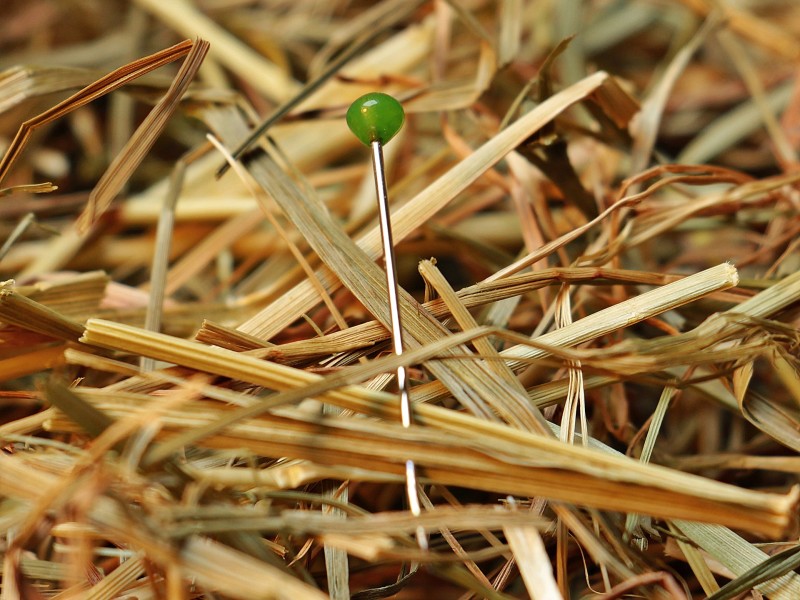
"There is surely nothing quite so useless as doing with great efficiency what should not be done at all." — Peter Drucker
Discovery is one of the most important phases of the product’s life cycle.
It is like trying to find a needle in a haystack, except the needle is a customer's problem, and the haystack is a pile of complaints and suggestions. It helps teams find the right problems to solve and ensure that their resources are allocated toward “building the right product”.

Yet, it is also one of the most overlooked stages in product development.
According to a post-mortem study of 100+ startups by CB Insights, 42% of startups fail because there was “no market need” for their product.
Despite a number of other studies leading to this same insight, there is still a significant lack of intent shown by product companies when it comes to product discovery.
Knowing is only half the battle, but not doing anything about it is like knowing how to swim and still choosing to drown.
Why is it important to create a discovery plan?
Product discovery is often ignored by companies for a variety of reasons. One common reason often provided is the lack of resources. Smaller companies or startups may not have the time or money to devote to product discovery and may prioritize other areas of their business.
Another reason for ignoring product discovery is overconfidence in the existing products.
Some companies may believe that their current offerings are sufficient and do not see the need to explore new options or ideas.
Additionally, companies may have a short-term focus and prioritize immediate profits over long-term product development and market research. Therefore, the companies do not put enough emphasis on understanding their customers and their needs, and hence not discovering the product that solves their problems.
However, the biggest reason why companies choose to overlook the discovery stage is the lack of trust in the discovery process.
The executives often feel that nothing valuable is coming out of it, are worried about its unbounded nature, and do not wish to make their engineering teams wait on the bench for too long. All of this is mostly due to the lack of necessary expertise and knowledge to conduct effective product discovery.
Having a product discovery roadmap can help appease most of these concerns.
A well-structured product discovery plan not only helps to identify potential risks and challenges early on, but it also builds trust towards the discovery process.
By mapping the discovery activities onto a timeline and providing visibility to all stakeholders, it keeps the discovery team focused on achieving their goals without going in circles on the same thing forever.
It can also help ensure that the solution is grounded in a solid understanding of the problem and user needs, and that all stakeholders have a clear understanding of how the solution was developed. This can build trust in the discovery process and increase the chances of success.

How to create a discovery roadmap?
Before diving into discovery, it is important to have a clear understanding of the product vision and strategy to empower you to refine the backlog that you take input for the discovery process. This will ensure that the discovery process is focused and efficient, and that the resulting insights are actionable and relevant to the product’s goals.
Let’s take an example of LinkedIn Stories. LinkedIn was the last to get on the bandwagon of content that expires after a time limit. While the concept of stories was very popular in the younger generation (with the success of Snapchat originally, and Facebook & Instagram later), it was still mostly associated with casual content. This eventually led to adding more noise than useful information on the LinkedIn platform, and as a result, was in direct conflict with their mission statement: To make professionals more productive and successful. Therefore, the idea failed badly and was recalled only months after launch.
In almost all modern product development practices, there is usually a preset linear release cycle during which the development team works together to ship an output to its customers.
(P.S. Don't forget to check out our product roadmap template)
In contrast, product discovery is usually non-linear and unbounded in nature. However, product teams can timebound individual discovery activities, instead of time-bounding the end-to-end discovery process. This guarantees that the teams do not spend excessive time on a single idea, therefore, avoiding stagnation.
Marty Cagan often talks about the big risks in product development:
Value risk
Feasibility and Business viability risk
Usability risk
Successful product discovery is all about minimizing these risks before the development starts. Therefore, all discovery processes are structured to answer these four questions.
1 – Is it valuable?
“It’s not just about shipping features, but about creating value for both our customers and our businesses.” — Teresa Torres
Identifying the target customer: This stage starts with understanding who the target customer is for the product and gathering information about their needs, wants, and pain points. This information can be gathered through customer interviews, focus groups and surveys.
Understanding their problems: In addition to the first hand communication tools above, combing through the product usage data, support tickets, sales call transcripts and customer emails can also provide invaluable insights into the customer problems.
However, as we have come to learn from experience, there is often a gap, the size of the Atlantic ocean, between what the customer tells you and what they actually mean. The best way to get to the bottom and understand the ‘why’ behind each problem is to directly observe them and understand their emotions as they face that problem and find ways to overcome it.
Research and analysis: Conducting research and analysis to gather information about the market, competitors, and potential alternate solutions to the problem that already exist. This information can be gathered through secondary research, such as reading industry reports, or primary research, such as conducting customer interviews.

Defining the problem or opportunity: From your market research, identify the problem areas that your product will address and define the problem statements. These should be specific, measurable, and should be linked with achievable goals that you can work towards.
Prioritization and alignment: The goal of product discovery is to mitigate the risks associated with all product decisions you have to take. As it might not be feasible to pass each roadmap feature through the full discovery process, you may have to prioritize the biggest and the most uncertain bets (features). Prioritizing will help you to avoid wasting time and resources on less important opportunities.
By the end of this stage, you should be in a good position to align the shortlisted opportunities with your stakeholders to get their buy-in for the next stage.
2 – Is it feasible and business viable?
"Feasibility is not a guarantee of success, but it is a necessary condition for it." — Clayton Christensen
The most successful products are those that strike a balance between being innovative and practical. If a product is too ambitious, it may be difficult to manufacture or too expensive for the target market. On the other hand, if a product is too conservative, it may fail to stand out in a crowded market. By considering both feasibility and desirability, a product is more likely to achieve commercial success.
Once each opportunity or problem has been identified to be valuable enough for the team to continue exploring, it is now time to find the best solution to solve that problem better than anyone else. During this stage, it is crucial to include representation from all departments (technology, marketing, sales, finance).
Ideation: Generate as many ideas as possible to address each specific problem. This can be done through group brainstorming sessions, where team members can bounce ideas off each other, or individually through a technique like mind mapping. It is important to not judge or dismiss any idea, as it may lead to unexpected solutions.
Prioritization: Once a list of ideas is generated, it is essential to prioritize them in order to determine which are worth prototyping. This can be done by evaluating each idea against a set of predefined criteria, such as feasibility, potential impact and alignment with the company's goals.
In addition to the technical feasibility, the business viability of the solution has also to be taken into account. For an idea to be successful in the long run, its business case should be validated so that its benefits (in any form) outweigh the cost to build it.
3 – Is it usable?
"The best way to predict the future of your product is to get it in the hands of real users. If you don't, the future will be an unpleasant surprise." — Eric Ries
Prototyping: By prioritizing ideas, teams can focus on creating prototypes or mock-ups of the most promising solutions and replicate the real-life scenario to the best form possible, but with minimal effort. This way the team can test and validate their assumptions and evaluate the feasibility of their ideas before committing to a final solution, which will increase the chances of success in the long run.
Validating and iterating: Testing the product with target customers to validate the solution and gather feedback. Use this feedback to iterate on the design and continue to improve it.
Once an idea has been validated and refined, it is ready for development. However, remember that product discovery is an iterative process, and things may change as you learn more about your customers and their needs. Be prepared to adjust your roadmap as necessary. Continuously monitor the product and seek customer feedback, and make necessary improvements to keep the product aligned with customer needs.
How to measure the success of your product discovery plan?
“When a risky idea succeeds in a sprint, the payoff is fantastic. But it’s the failures that, while painful, provide the greatest return on investment.”— Jake Knapp
The success of a particular product discovery cycle is usually measured by the adoption and engagement rates of the feature after it goes live. However, in addition to that being a lagging indicator of success, it can only tell half of the story. What about all the hours the team spent testing other ideas that got dropped in the validation stage because the users were not as passionate about them as you were?
Another more practical way to measure the success of your discovery process is to track the speed of your learning i.e. the time between the same discovery activities, and aiming to reduce that with every iteration. By striving to increase their speed of learning, a product team can reduce their decision making time, and ship better products faster.

Eager to get started with your product discovery roadmap?
Try out the airfocus template to better manage feedback and inform the product discovery stage.
Book recommendations for Product Discovery
“Inspired: How to Create Tech Products Customers Love” by Marty Cagan
“The Lean Startup: How Today's Entrepreneurs Use Continuous Innovation to Create Radically Successful Businesses” by Eric Reis
“Continuous Discovery Habits” by Teressa Tores
“Sprint: How to Solve Big Problems and Test New Ideas in Just Five Days” by Jake Knapp
“Escaping the Build Trap: How Effective Product Management Creates Real Value” by Melissa Perry

Sami Rehman

Read also





Create effective product strategy

Experience the new way of doing product management



